How early Black settlers found freedom, and new challenges, in B.C.
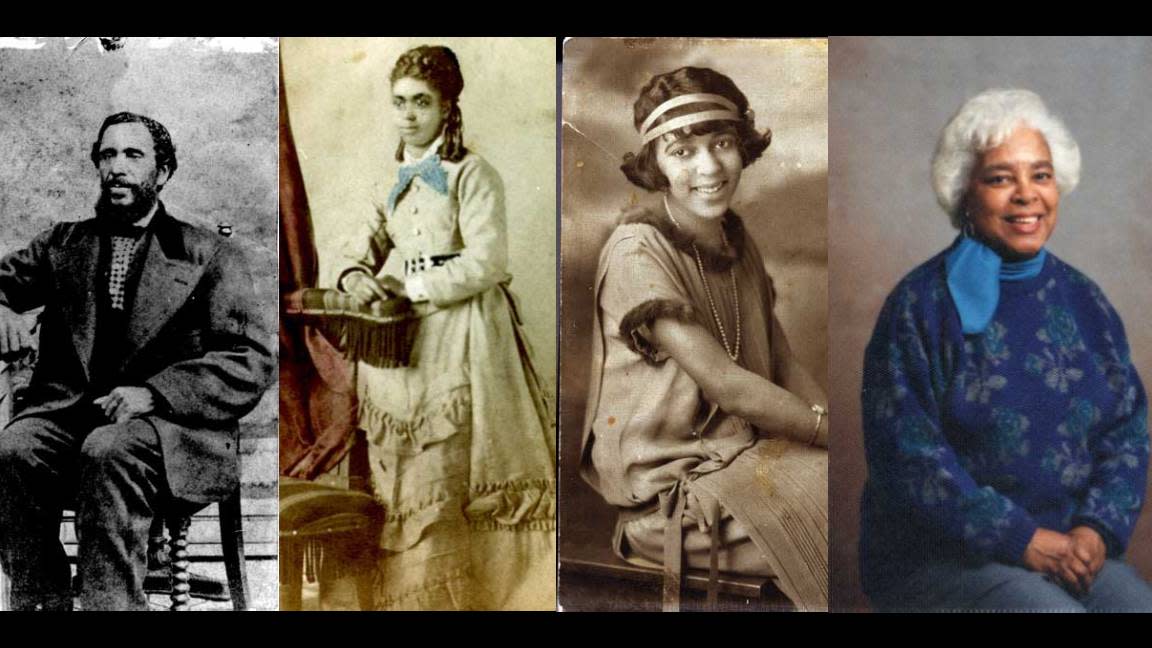
- Oops!Something went wrong.Please try again later.
In a Salt Spring Island library hangs a large painting of a father and daughter dressed in 19th-century clothing — a glimpse of the little known history of Black people who moved to British Columbia seeking freedom.
The painting, commissioned by Judy Sims, portrays her great-great-great grandfather Howard Estes and his daughter, Sylvia Stark, and serves as a reminder of the family's struggle with enslavement in the U.S., their escape, and the challenges they faced after arriving in B.C.
Sims, 78, says it's important to remember the province's early diversity, as well as the adversity faced by formerly enslaved settlers yearning for a new home.
"It's a rich history that we're very proud of," she said. "Knowing and understanding and learning about people who don't look like you is critical."
But it's a history that could have been easily lost had it not been for a manuscript written by her great-grandmother.

A painting commissioned by Judy Sims of her ancestors Howard Estes and Sylvia Stark hangs in the Salt Spring Island library as a reminder of their contributions as early settlers on the island. (Submitted by Ceridwen Ross Collins)
For Aliyah Dunn-Salahuddin, a PhD candidate at Stanford University who has researched the movement of Black people from California to B.C., the stories of early Black settlers illustrate "how far people will go to attain a sense of dignity and freedom."
Along with Sims, she hopes the history of B.C.'s Black settlers and the reason they left the U.S. will be remembered by future generations, especially in times of racial and political discord.
"This is just a small story of a small group of people. But to me, history is the compilation of millions of small stories that culminate into a larger and more important one," Dunn-Salahuddin said.
Searching for freedom
Sims says several members of her family have made their mark on B.C. history, including Sylvia Stark, who lived to the age of 106 and was a popular local storyteller; and Sylvia's daughter Emma Stark, who was the first Black teacher on Vancouver Island.
But Sims says she owes the preservation of the family's history to her great-grandmother Marie Stark-Wallace, Sylvia Stark's daughter, who wrote down her mother's stories when she was in her early 90s.
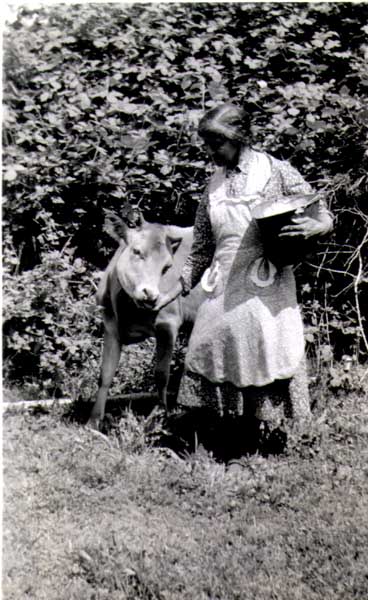
Marie Stark-Wallace was born on Salt Spring Island in 1867 to Sylvia and Louis Stark. In her early 90s, she learned how to type and wrote out her family's history. Her manuscript was later published in a local newspaper. (Submitted by the Salt Spring Island Historical Society)
"She wrote all of this down and what a blessing because otherwise we would have no history of the Stark family at all," said Sims.
Her manuscript was posthumously published in the Gulf Island Driftwood newspaper between November 1979 and January 1980.
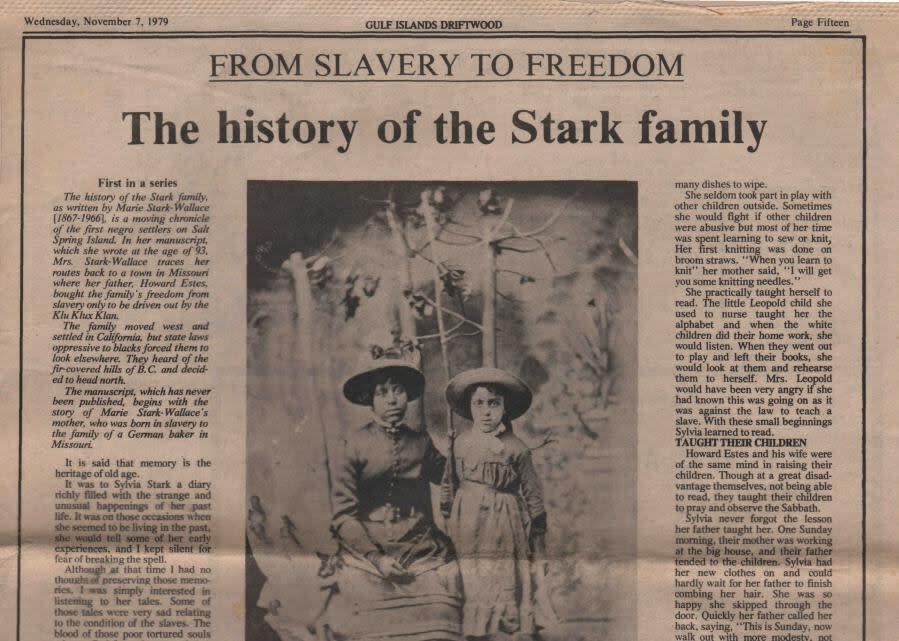
A manuscript written by Marie Stark-Wallace and published in a local newspaper in 1979 and 1980 told the extensive history of the Estes and Stark family's journey from slavery in the U.S. to freedom in B.C. — though life in Canada also came with challenges. (Submitted by the Salt Spring Island Historical Society)
In the manuscript, Stark-Wallace outlines how Howard Estes was born enslaved to Scotsman Tom Estes in Clay County, Mo., while his wife and three children were owned by baker Charles Leopold in the same county.
In 1849, according to Stark-Wallace, Estes was sent to California during the gold rush with cattle and was permitted to make money for his freedom papers for his family.
But Tom Estes refused to give up the papers, even after receiving the required $1,000.
"Unwilling to be thwarted [Howard] made another $1,000 sending it directly to Charles Leopold," said the manuscript, adding that Tom Estes claimed this money in a lawsuit but had to forgo Howard's papers.
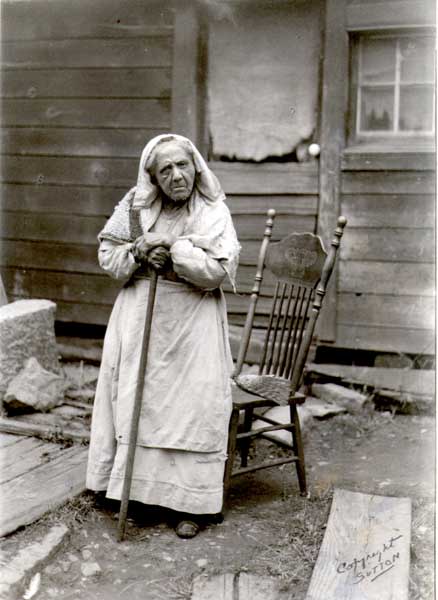
Sylvia Stark pictured in front of the family's Salt Spring Island home, which stands to this day. Sylvia, who lived to 106, was well known among locals as a storyteller. (Submitted by the Salt Spring Island Historical Society)
Howard returned to Missouri after making enough money for the entire family's freedom papers, before he left for California again with his wife Hannah and their two children, Sylvia and Andrew, the manuscripts says.
But unrest was brewing after the U.S. passed the Fugitive Slave Cause.
This allowed escaped slaves to be returned to their owners, Dunn-Salahuddin said.
"There was financial incentive for people to catch enslaved people," she said, adding that free people, if kidnapped, could be brought back forcefully to slave states.
"I can't overstate how real their fear was … their determination [to leave the U.S.] is a reflection of what they were escaping and how motivated they were."
Dunn-Salahuddin said it spurred hundreds of Black people to leave California after receiving an invitation from B.C.'s first governor, James Douglas, who had Creole heritage.
Life in B.C.
In 1858, the Estes family — including the newly married Sylvia and her husband Louis Stark — also joined the migration to Canada, according to Stark-Wallace's manuscript.
With a herd of their best cattle, the family arrived in Victoria, but by the 1860s most of the family had settled on Salt Spring Island "and were able to secure 200 acres, a dollar an acre," said Sims.
"This was virgin territory with problems of building anything," she said, proudly adding that the old log homestead, which still stands today, was the original farmhouse.
"[It's] 162 years old and I have a contractor … and he marvels at how dry and intact everything is."

The 162-year old homestead of the Estes and Stark family still stands today and is maintained by Judy Sims and her sister for future generations. (Submitted by Judy Sims)
For Sims, the Estes/Stark story is just a fragment of the experience faced by Black settlers.
She says Canada has its share of racism and injustice, claiming two Black men were killed on Salt Spring and that Sylvia's husband Louis Stark was killed by a white man in Nanaimo, B.C., in 1895.
Dunn-Salahuddin adds it's important to remember that Black families, too, were settlers on Indigenous territory.
"We think about these pioneers … and we racialize them as white. But these Black people who make their way to Canada are also a part of that narrative," she said.
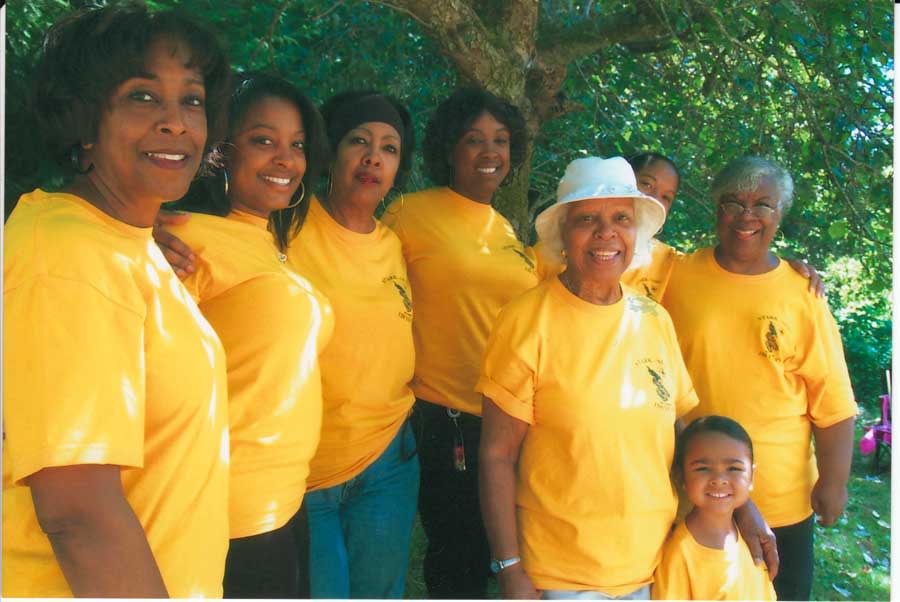
Judy Sims (third from the right) and the remaining descendants of the Estes/Stark family have moved away from Salt Spring Island. (Submitted by the Salt Spring Island Historical Society)
Gail Sjuberg, current editor of the Gulf Island Driftwood, says there's not much information about who was involved in publishing Stark-Wallace's family history. But she says the final article was published with help from Peggy Cartwright Walker, a writer and former silent film actress who had a summer cottage near the Stark family home on Salt Spring.
Walker became interested in B.C.'s Black history and even wrote a few books about it in the 1970s, says Ceridwen Ross Collins from the Salt Spring Island Historical Society.
"People who are interested in history become [the society's] armchair historians ... [Walker] put history first to highlight the rich tapestry of Salt Spring Island," Collins said.
Sims contributes to that tapestry as well, as she dedicates herself to keeping up the homestead and sharing archival material with the society in her role as one of her family's last record-keepers.
But she's worried future generations may not have the same dedication.
"We are somewhat saddened by the fact that none of the children have expressed any desire to live on Salt Spring," she said, adding she lived there from 2000 until her mother's death in 2016, when she moved to Arizona.
"I have dear friends that … said, Judy, when are you moving back? And I thought, well, that's a wonderful notion, so who knows?"
For more stories about the experiences of Black Canadians — from anti-Black racism to success stories within the Black community — check out Being Black in Canada, a CBC project Black Canadians can be proud of. You can read more stories here.

(CBC)

